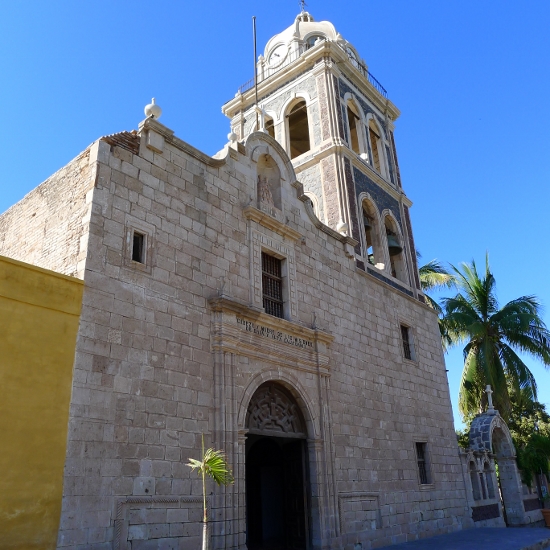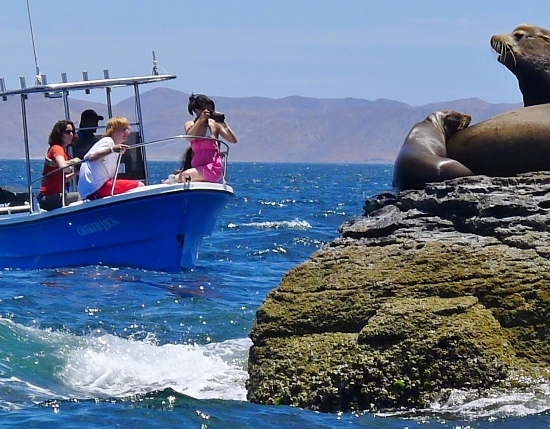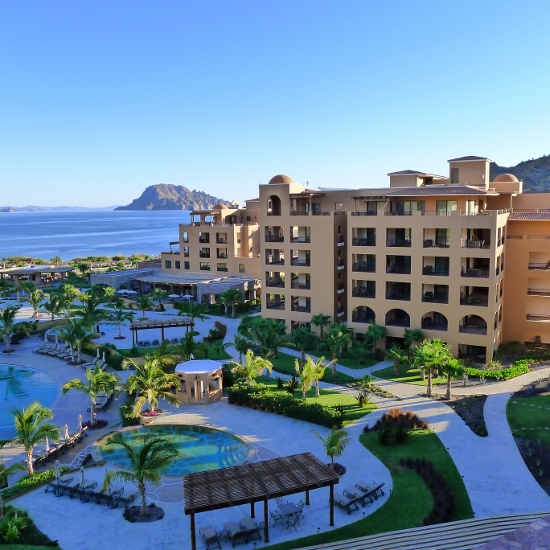"Know, that on the right hand of the Indies there is an island called California...and it is peopled by black women, without any man among them, for they live in the manner of Amazons."
So wrote Spanish author Garci Rodriguez de Montalvo of a fictional paradise governed by a black super-woman he called Queen Calafia in his 1510 novel, Adventures of Esplandian. Among the book's fans was the Spanish conquistador Hernan Cortes, who after invading the Mexican mainland in the 1520s sailed west to what he'd heard was an island loaded with gold.
Like Christopher Columbus, Cortes thought the lands of the "New World" were part of the eastern side of the Indies, and that the island could have been de Montalvo's California.
Cortes landed in what was to become the Spanish region of Las Californias in 1535, but after striking out in his search for gold soon went back to the mainland.

Pelican hitches a ride on a boat cruising the waters off Las Californias.
Another expedition in 1539 found the "island" was actually an 800-mile-long peninsula (today's Baja California) edging the Pacific on one side and what Cortes named the Sea of Cortes on the side facing the mainland.
After many failed attempts to colonize Las Californias - the natives were disinclined to share their turf with the bearded invaders - a veteran Jesuit missionary was able to talk the local folks into letting him set up a mission there in 1697. Built on a spot the Jesuits named Loreto (after Our Lady of Loreto, the patron saint of the founding Jesuit priest), the mission turned out to be the Spaniards' first permanent colony on the peninsula.

Mision Nuestra Senora de Loreto, first permanent mission in Baja California.
Fast-forward to today, and Loreto is one of Mexico's 65 or so pueblos magicos (magic cities), so-designated in recognition of their heritage, culture and colonial ambiance. What's more, the city edges the spectacular Loreto Bay National Marine Park, which runs along 50 miles of shoreline and juts out 25 miles into the Sea of Cortes, all told covering some 800 square miles.
Among key points in the government- and UNESCO-protected park are five large, volcanically formed islands on which sea lions go about sunning themselves while sea gulls, pelicans, terns and blue-footed booby birds dart around above. Below, sea turtles glide through the cobalt-blue waters as do dolphins and big gamefish of the likes of dorado, marlin and sailfish along with hundreds of other species of marine life.
At certain times of the year the park comes alive with pods of whales splashing around the islands and slapping the water with their immense tails. It's their annual migration to breeding and birthing spots along the peninsula, some having found their way here from as far away as feeding grounds in the Arctic.
Visitors to the park quickly see for themselves why it's earned descriptions such as "the world's aquarium" by underwater explorer Jacques Cousteau and as "Mexico's Galapagos" by Mexico City-based historian Jaime Capulli. Roberto Salazar, a guide for the local tour company Wild Loreto , says "There is absolutely nothing like the thrills of seeing all these wonders of Mother Nature close up."

Tourists check out sea lions on an island in the marine park.
Enjoying all this are some 35,000 annual tourists plus a hefty number of expats (as many as 7,000, mainly from the U.S. and Canada) living in the area along with 13,000 or so "choyeros" (natives of the Loreto region).
Most of the populated area is along a 25-mile coastal strip starting at the town of Loreto and running south to a big luxury resort on Danzante Bay. Along the way is the popular harbor of Puerto Escondido and the residential and resort community of Nopolo, the latter orginally built as the focal point of a mini-Cancun-like project that never materialized.
Vacationers have a choice of dozens of small hotels and boutique inns dotting the region, mostly in Loreto and Nopolo, and in four hotels with more than 100 rooms. Two of the larger hotels are owned by Mexico's Villa Group Resorts chain: the 118-room Hotel Santa Fe in the town of Loreto, and the 181-room Villa del Palmar at the Islands of Loreto, opened two years ago.

Villa del Palmar luxury resort on Danzante Bay.
Nestled between a secluded beach and the Sierra de la Giganta mountain range, the Villa del Palmar features five swimming pools, two tennis courts, three restaurants, a big outdoor Jacuzzi and a spa and fitness center. The property is on a 3,600-acre site on which the Villa Group plans to add an 18-hole golf course and other new attractions close to the hotel.
Getting there: Alaska Airlines' Horizon Air offers nonstop hops from Los Angeles to Loreto International Airport five days a week. Flight time is around two and a half hours. Aeromexico's Aerolitoral flies from Los Angeles to Loreto on Thursdays and Sundays. Aerolitoral also links Loreto to Culiacan and Mexico City. Smaller airlines such as Aero Calafia offer intra-Mexico service.
For vacationers traveling over the road it's about a 13-hour drive from San Diego to Loreto.
All photos by Bob Schulman.